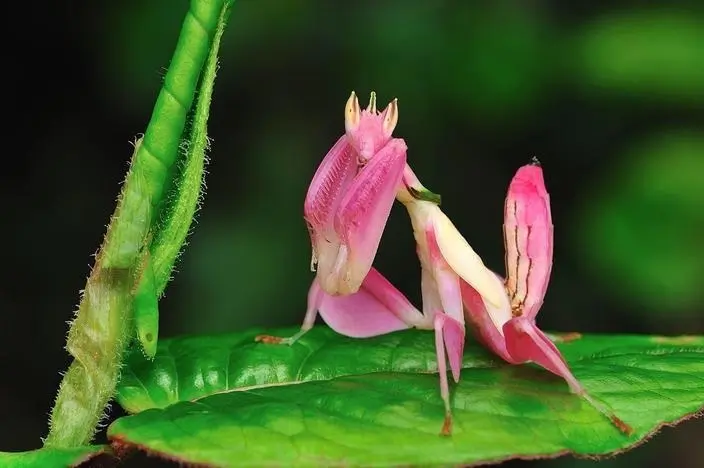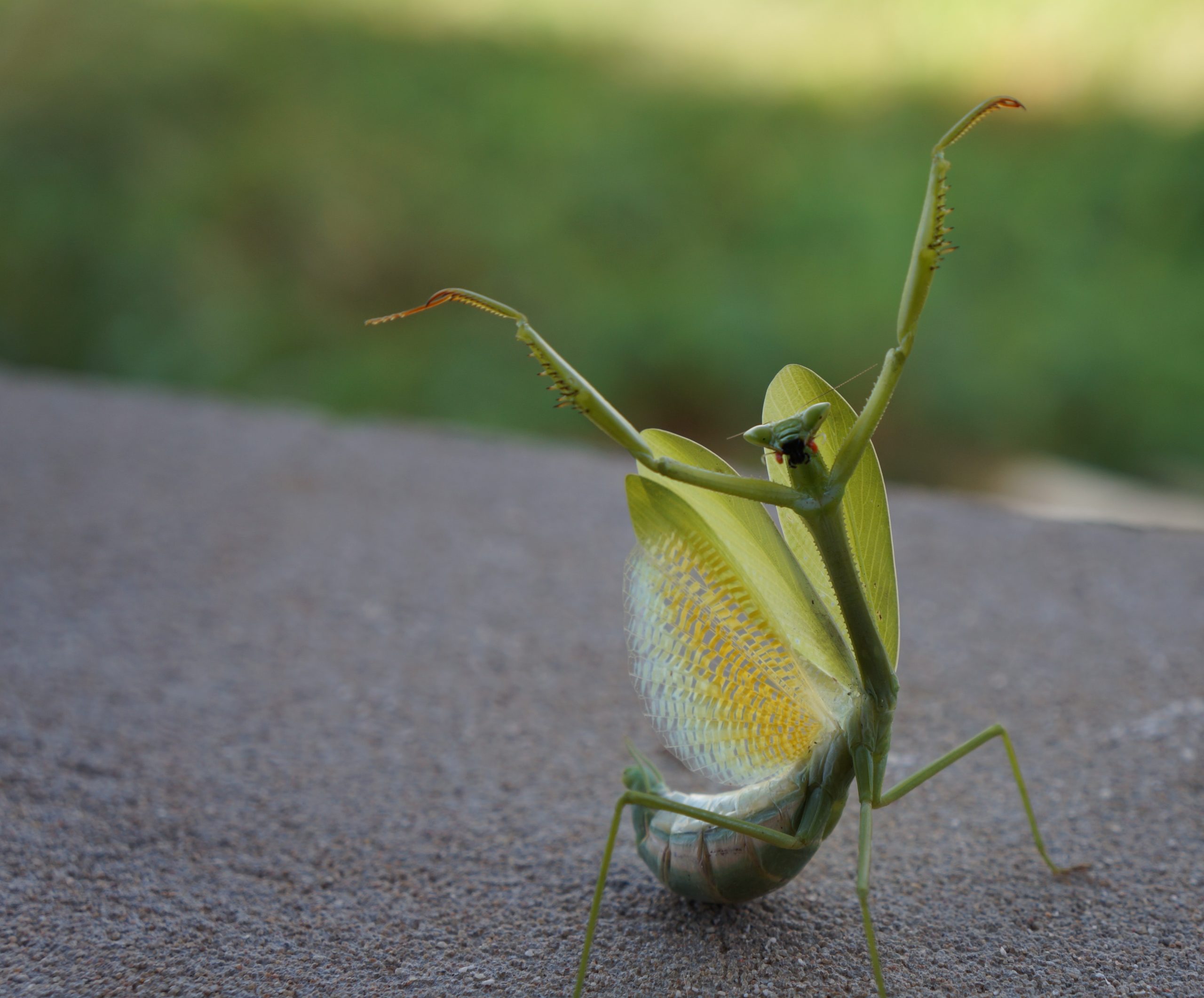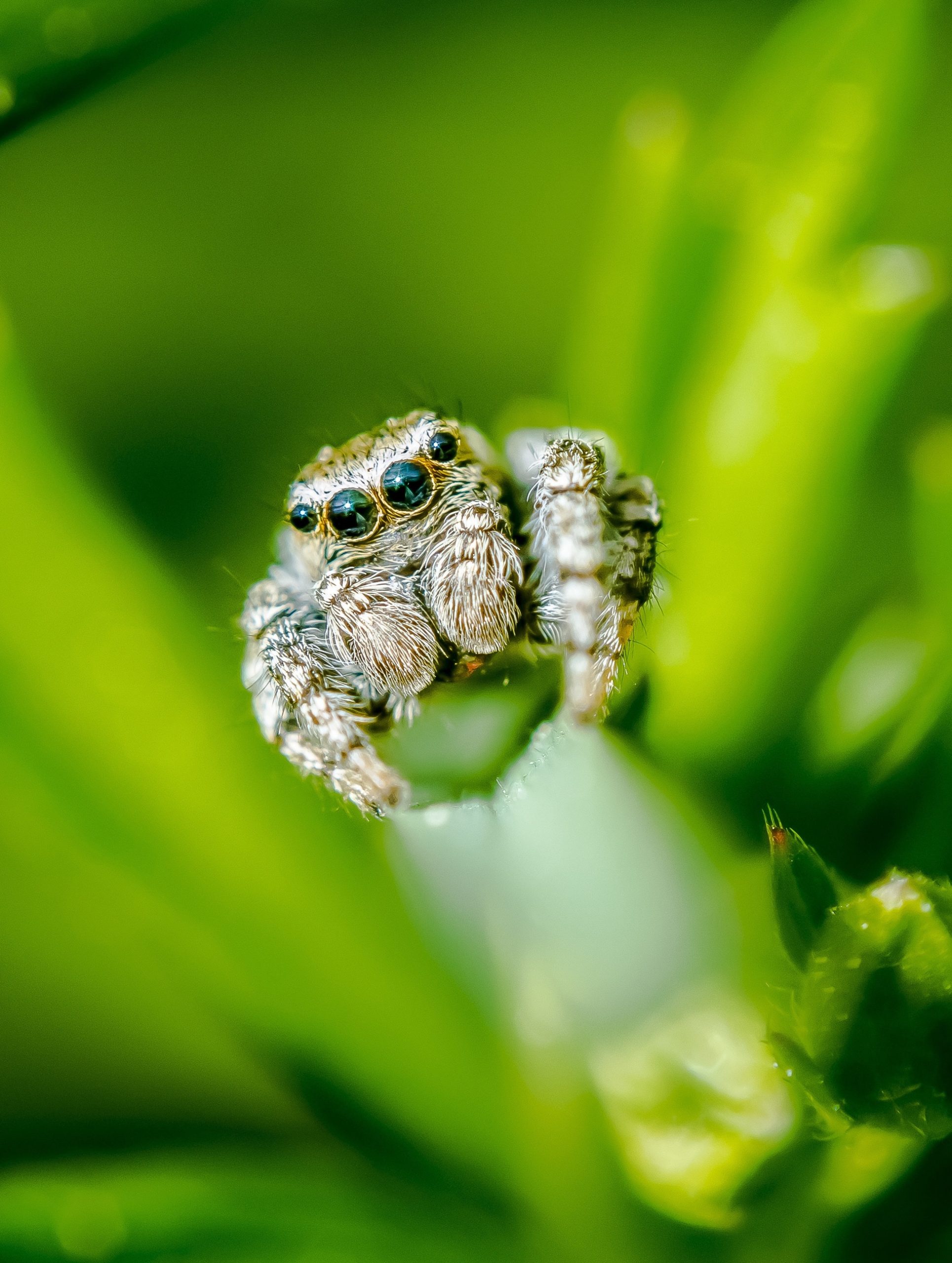The Wonderful Life of the Orchid Praying Mantis
Nature is full of fascinating creatures that continue to amaze and inspire us. One of the most intriguing and beautiful creatures to attract attention is the Orchid Praying Mantis (Hymenopus crowned). This exotic insect species is a master of camouflage and has extremely unique behaviors that live up to its name.
In this blog we take a closer look at the life of the Orchid Mantis and discover why this little hunter is so special.
The Natural Living Environment
De Orchid Praying Mantis is native to parts of Southeast Asia, including Malaysia, Indonesia, and Thailand.
These areas are rich in tropical forests and vegetation, providing the ideal environment for these camouflage experts. Here they can hide among the flowers and leaves, waiting for their next prey.
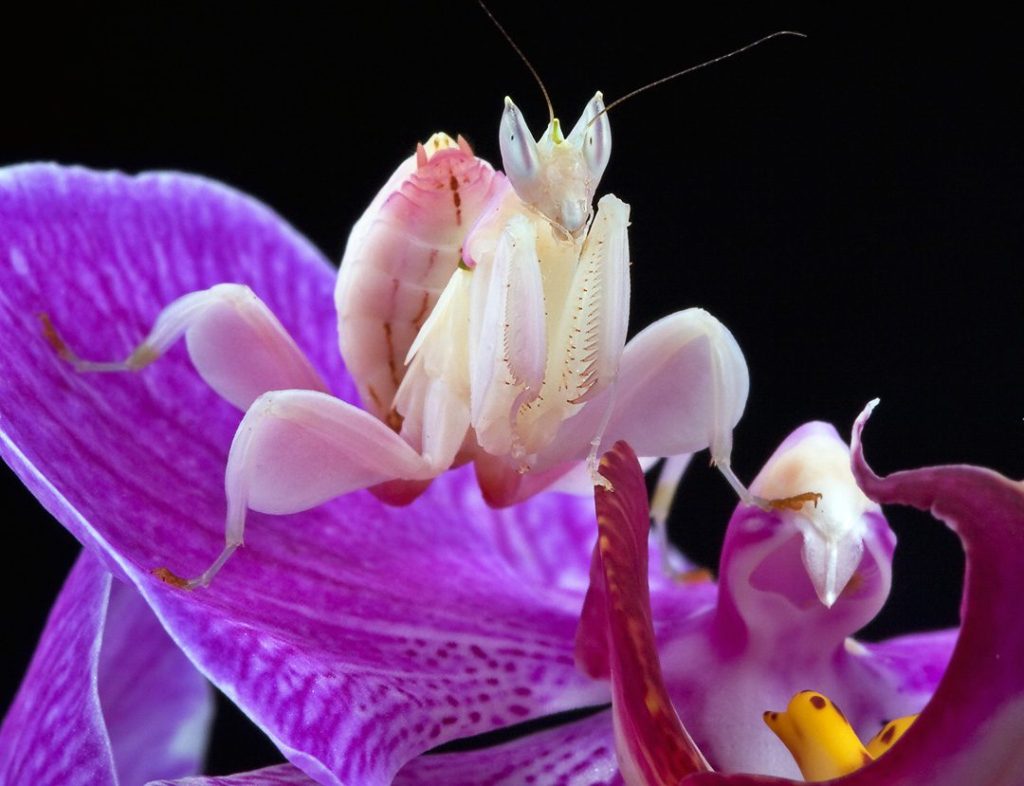
Appearance and Camouflage of the Orchid Praying Mantis
De Orchid Praying Mantis distinguishes itself from other praying mantis species by its unique appearance. With its delicate structure, it seems to have come straight out of a fairy tale. These insects vary in color, ranging from white to pink and even light green, depending on the environment they live in.
The Orchid Praying Mantis is a master of camouflage, straight out of a fairy tale, disguised as a blooming orchid to deceive its prey and go undetected on the hunt.
What makes this little fighter truly spectacular is its incredible camouflage ability. Like a masterful actor, the Orchid Praying Mantis adapts perfectly to its environment. It closely resembles a blooming orchid, hence its name.
The wings of the females even have the distinctive petals of an orchid, and the veins on their wings mimic the veins of a flower. This camouflage allows them to fool predators and go unnoticed by their prey.
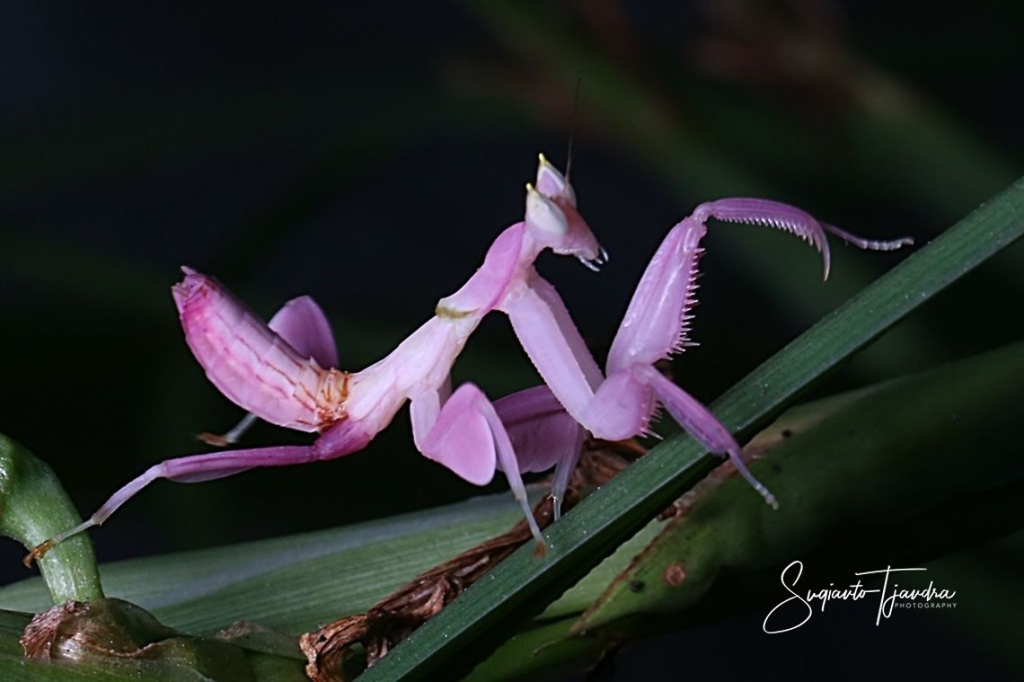
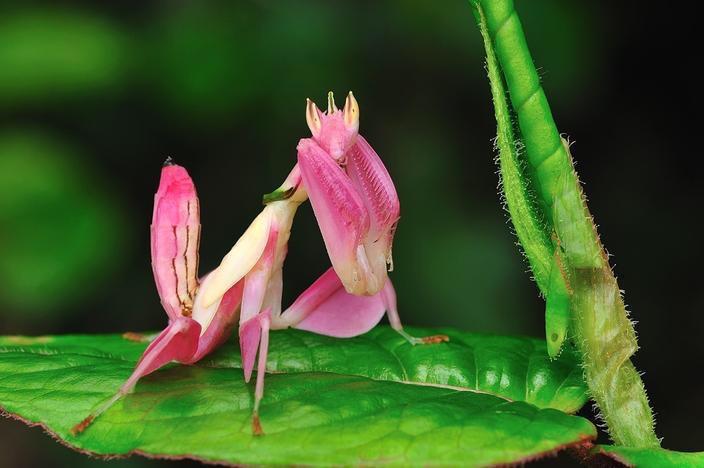
Diet and Hunting Behavior
Like any praying mantis, the Orchid Praying Mantis a carnivore and preys on other insects. Their diet mainly includes flies, moths, and other small insects native to their habitat.
What makes them special compared to other praying mantises is their unique hunting behavior. Instead of actively searching for their prey, they rely on their masterful camouflage to lure prey towards them.
The Orchid Mantis is a masterful carnivore that camouflages its prey and strikes mercilessly with its modified front legs.
They strategically position themselves on flowers or leaves that match their appearance and wait patiently for an unsuspecting insect to approach.
Once prey is within range, they strike mercilessly with their sharp front legs, which are adapted to grab quickly and effectively. Their hunting strategy is a perfect example of how nature can adapt to survive.
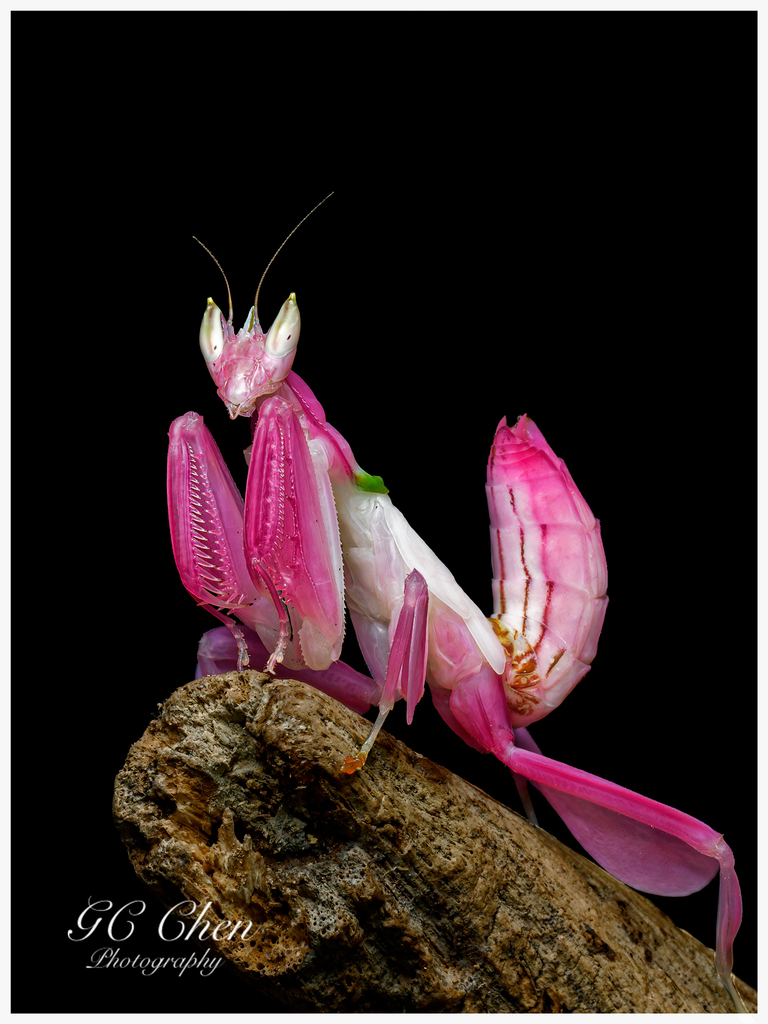
The Reproduction
Like other insects have Orchid Praying Mantis also a fascinating life cycle. Reproduction being a fascinating and deadly process.
After mating, or sometimes even during the mating process, most females of the Orchid Praying Mantis a striking behavior: they begin to eat the male.
The female needs many nutrients to produce healthy eggs, and the male provides a valuable source of nutritious food.
After mating, the female lays a frothy mass of eggs on a suitable location, such as a twig or leaf. This egg mass looks like a small, white sac and provides protection for the eggs.
As time passes, the nymphs hatch from the eggs and begin their development.
The Orchid Mantis has a fascinating reproductive cycle, in which the female eats the male after or already during mating to obtain nutrients for healthy eggs, which give rise to nymphs that develop into beautiful adults.
Life Cycle of the Orchid Praying Mantis
The lifespan of a Orchid Praying Mantis varies depending on several factors such as environmental conditions, available food, and predator avoidance. In general, most adults can Orchid Praying Mantis about 4 to 6 months of life.
During this period they go through different life stages, starting as eggs, followed by hatching as nymphs. Nymphs go through a number of molts as they grow and develop into adults. The adult stage of one Orchid Praying Mantis usually takes several months.
The lifespan of the Orchid Mantis is on average 4 to 6 months. They go through life stages from egg to adult, with individual variations depending on environmental factors and care.
Remember that the lifespan of individual insects can vary and some specimens may live slightly longer or shorter depending on the specific conditions they are in. Proper care and environment can contribute to a longer and healthier life for these beautiful insects.
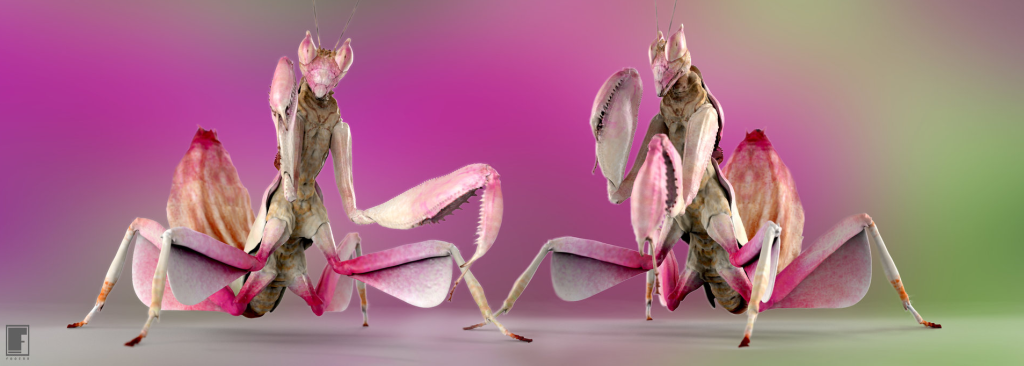
An Orchid Mantis as a pet
Holding one Orchid Praying Mantis having a pet can be an interesting and engaging experience, but it also requires responsibility and attention to their specific needs. Here are some guidelines for one Orchid Praying Mantis to keep as a pet:
Living environment: Get a suitable one terrarium of insectary of 20x20x30cm. A small, well-ventilated terrarium with branches, leaves and flowers can serve as a suitable habitat for the praying mantis. Make sure there is enough room to move around and that it terrarium stays clean.
Temperature and Humidity: Orchid Praying Mantis thrive best at a warmer temperature somewhere between 25°C and 35°C. Provide a suitable humidity, usually between 60% and 80%. This can be achieved by periodic spraying with a fine mist.
Nutrition: Feeding like carnivores Orchid Praying Mantis himself with live insects. Provide a regular supply of food, such as fruit flies, midges or small crickets. It is essential to provide them with a varied diet and remove any uneaten prey to avoid accidents.
Hiding places: Offer enough hiding places in the form of leaves, branches of plant. Orchid Praying Mantis are masters of camouflage and need hiding places to feel safe and comfortable.
Safety: Avoid keeping multiple adult praying mantises as they can be territorial and fight each other with fatal consequences.
Regular Observation: Take your time Orchid Praying Mantis to be observed, but be careful when handling. While not generally aggressive, they can become stressed from too much handling.
Knowledge and research: Make sure you are well informed about the specific needs of the Orchid Praying Mantis before taking them as pets. Research their natural habitat, behavior, diet and reproduction to make sure you care for them properly.
Are you interested in keeping an Orchid Mantis as a pet? Then find out everything about keeping a praying mantis in our blog “Holding a Praying Mantis"



